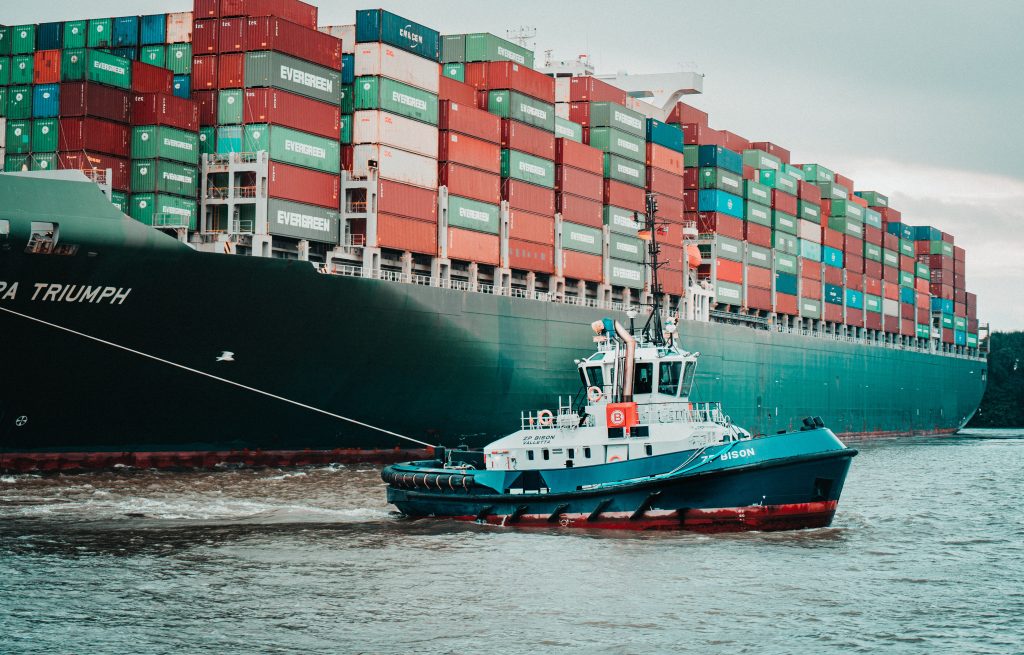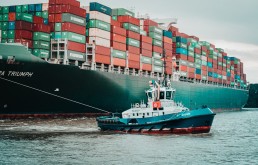Professional workers 'significantly' harder to hire and retain

Dive Brief:
- More than eight out of 10 U.S. companies find hiring and retaining professional and office workers extremely difficult and a bigger challenge than employing manual service workers, the Conference Board found in a survey.
- Professional and office workers “are now significantly harder to both find and retain than just one year ago,” the Conference Board said Thursday, noting that 84% of companies surveyed “are struggling to find talent” compared with 60% in April 2021. Eight out of 10 (81%) of companies face difficulty hiring manual service workers.
- “Over the last few years we’ve seen headline after headline focus on dwindling supply of manual and trade services workers,” according to Robin Erickson, vice president for human capital at the Conference Board. The survey “reveals that office and professional workers have become a scarcer commodity.”
Dive Insight:
CFOs and their C-suite colleagues, facing the tightest labor market in years, have sought to hire and retain staff by raising pay, expanding benefits and approving remote work for a record proportion of their employees.
Business and government raised employee compensation 4.5% during the first quarter compared with the same period in 2021, a higher increase than the 4% annual growth during the fourth quarter, the Labor Department said on April 29. Meanwhile, the cost of benefits rose 1.8% during the first quarter, faster than any quarter since 2004.
Demand for workers far outstrips supply. Organizations reported 11.3 million job openings in February but only 6.3 million Americans sought work, the Labor Department said.
Read the original article from CFO DIve
How Different Business Teams Distribute Video Content

Marketers say they distribute video content most often on social media, whereas salespeople and customer experience professionals say they distribute it most often to prospects and customers, according to recent research from Vidyard and Demand Metric.
The report was based on data from a survey conducted in December 2021 and January 2022 among 705 marketing, sales, customer experience, and other business professionals. Some 47% of respondents work for B2B firms, 12% for B2C firms, and 41% for hybrid B2B-B2C firms.
Marketers say the most common distribution channels they use for video are social platforms, their company website, and YouTube.
Salespeople say they most commonly distribute video during conversations when trying to prospect/convert and customer experience professionals say they most commonly distribute video during customer conversations/support.
Overall, video is most commonly used by businesses on social media platforms, on their own websites, and during sales and customer conversations.
Marketers say brand video is the video type they are investing in most, whereas salespeople and customer experience professionals say demo/product video is the video type they are investing in most.
Some 82% of respondents say the role of video is becoming more important in their organization.
Read the original article from Marketing Prof
Delivering the goods

Arriving Today: From Factory to Front Door—Why Everything Has Changed About How and What We Buy
by Christopher Mims, Harper Business, 2021
Sometimes, writing a book feels like a fool’s errand. It is a long, inflexible project, planned years in advance and must fit around existing jobs and publishers’ schedules. Writing something that lands with prescience requires unusual foresight and often a big dollop of luck. This process is even trickier when the subject is fast moving. Christopher Mims, a tech columnist at the Wall Street Journal, attempts such a thing with Arriving Today, a detailed and dedicated explainer about the logistics industry.
After Mims has spent years reporting from ships, ports, trucks, and warehouses, the pandemic hits and everything is upended. As Mims discovers, “a period of furious activity…became the new normal for the entire industry.” Clearly, the pandemic had to be accounted for in the book. The problem is that, as yet, the firms in the eye of the storm—Amazon, FedEx, UPS—are still figuring out what the post-pandemic future looks like. Arriving Today is peppered with references to the disaster to appear current, but these only have the effect of underlining how much of the industry’s future is unknown. Beyond highlighting that the pandemic has accelerated the adoption of e-commerce, it is difficult for Mims, or anyone else, to look into the future with much clarity.
Read the original article here
Regenerative products just might save the planet - and the economy

A version of this article appeared in the Autumn 2020 issue of strategy+business.
With the help of science, we’ve come to understand our impact on the planet that is our home. With each item we produce, building we construct, forest we cut down, acre we plow, and journey we make — enabled by resources we derive from our planet’s prehistoric past — we do small amounts of harm to the fragile balance of nature that sustains life. As we’ve replicated our capabilities and developed our ability to scale, those tiny harms have multiplied to the point that the cumulative damage now threatens our planetary life-support system.
Efforts to address this situation have so far consisted of denial, modest efficiency improvements, recycling, and, in some cases, the substitution of products less harmful than their predecessors. But these well-intentioned actions are not nearly enough to stop, let alone reverse, the effects of global climate change. What we need is a way to rewind the ecological tape — a regenerative approach — and the leadership to make it happen.
We need a way to rewind the ecological tape — a regenerative approach — and the leadership to make it happen.
Read the original article here
Supply chain leaders: Lost in the fog of disruption

The last two years have been uncertain, complex and difficult. While many supply chain leaders have a heightened image, most have struggled to produce impressive results. In fact, the nonstop disruptions over the last two years have resulted in inefficiency, ineffectiveness and poor customer satisfaction.
Supply chain leaders have not had the opportunity to be proactive, as every time they thought they had a path to success another disruption occurred knocking them off into the forest. In my view, supply chain leaders have spent the last two years:
- Being reactive, not proactive
- Being tactical, not strategic
- Managing, not leading
- Playing defense, not offense
Now, after two years of non-stop disruptions it is important that we look ahead and get back on top of where we are heading. Let’s face it, the disruptions over the last two years have changed our businesses and we are late in refocusing our direction.
Supply chain leaders need to regain the momentum and focus on:
Being reactive and proactive. Sure, disruptions will continue, and we must react to these disruptions; however, the supply chain of today is drastically different than the supply chain of 2020. We have major staffing, process and technology problems. These problems must be proactively addressed with agility, resilience and optionality.
Being tactical and strategic. For the last two years we have shifted and primarily worked from home solving problems. We found satisfaction in solving problems and achieved a sense of accomplishment working at the tactical level.
Read the original article from SCMR
How Can Companies Prepare For The Upcoming Wave Of ESG Whistleblowers In Europe?
 Companies with operations in Europe are facing changes brought about by the new EU Whistleblower Directive and the corresponding national implementing laws. Key new rules oblige companies to set up internal reporting channels and scrutinize how they conduct internal investigations and treat whistleblowers. At the same time, many companies are under increasing pressure to improve and disclose their environmental, social and governance (“ESG”) practices. This article looks at what companies operating in EU member states should be doing to prepare for the upcoming wave of ESG whistleblowers in Europe.
Companies with operations in Europe are facing changes brought about by the new EU Whistleblower Directive and the corresponding national implementing laws. Key new rules oblige companies to set up internal reporting channels and scrutinize how they conduct internal investigations and treat whistleblowers. At the same time, many companies are under increasing pressure to improve and disclose their environmental, social and governance (“ESG”) practices. This article looks at what companies operating in EU member states should be doing to prepare for the upcoming wave of ESG whistleblowers in Europe.
Board directors of companies with significant operations in the European Union know all too well that their companies are increasingly expected to embrace sustainability and address ESG requirements. 2021 was an illustrative year in that respect, amplified by a number of legislative initiatives that impacted companies’ ESG disclosure obligations. Among them are the EU Sustainable Financial Disclosure Regulation (“SDFR”), which details requirements for sustainability-related disclosures in the financial services sector, in effect since March 10, 2021. The SDFR imposes sustainability disclosure obligations covering a broad range of ESG metrics both at the entity and the financial products levels. Also, the new related EU “Taxonomy Regulation”, in effect on a phased basis since 1st January 2022, establishes companies’ obligations to disclose how and to what extent their activities are associated with environmentally sustainable economic activities.
Read the original article from ChiefExecutive.net
Don’t let negotiations upset the apple cart

For a buyer working in supply chain management to say their world has become more turbulent is a vast understatement. Many buyers may find themselves in a scenario similar to the one faced by Taylor. In this era of never-ending change, there is a practical need for supply chain buying managers to consider the relationship history with their key suppliers and their strategic expectations so that they can better understand and predict potential supplier negotiation behaviors and outcomes when environmental changes occur, both internal and external to their organizations.
Some buyers may have a collaborative (win-win) strategic situation with their key suppliers, in which there is information sharing and concern for the success of both firms. Other buyers may be facing a competitive (win-lose) strategic situation, where their suppliers emphasize their own short-term gains. After repeated negotiations, buyers learn to adjust to their suppliers’ negotiation styles given their past history. What happens then to buyers’ levels of trust when suppliers change their negotiation strategy to a different style after a history of doing it the same way?
Further complicating buyer-supplier relationships are environmental forces or changes, both internal and external, that are out of the control of the buyers and suppliers alike. Internal changes could include new executive leadership within the supplier organization that changes a strategic emphasis either toward or away from more long-term collaboration with their buyers. And, externally, these changes could include items such as price changes—either higher or lower—in key product components.
Read the original article from SCMR
Buy now, pay later: Is it a supply chain thing?

Let’s say that you’re the manager of logistics for a major retailer. Led by the sales and marketing groups, your firm has recently implemented the latest rage in e-commerce and retail purchasing practices, “buy now, pay later,” or what we’ll call BNPL. The program allows consumers to make a purchase and receive the merchandise today while making payments over time. Of course, these programs have been around for years. Backed by finance companies, they’ve typically been offered by companies and services providers with expensive products that people used to spend years saving up for, everyone from your local dentist to finance expensive dental procedures like crowns and veneers to furniture retailers. Today, these programs have gone mainstream: Use your Paypal account to buy a $60 pair of shoes online, and Paypal is likely to give you the option of paying for the purchase over four payments to six payments.
It’s easy to see why sales, marketing and finance might love these programs because they potentially open up a new sales channel and increase revenue. But what about supply chain? Perhaps it’s not as simple as it seems on the surface and creates a new set of logistics costs and headaches.
Over the years, you, the supply chain manager, have made the accommodations necessary to facilitate a lay-a-way purchase.
Read the original article from SCMR
Motivator in Chief: Getting the Most from Your Team
May 2022 | Nano Tools | Senior Leadership

Nano Tools for Leaders® are fast, effective leadership tools that you can learn and start using in less than 15 minutes — with the potential to significantly impact your success as a leader and the engagement and productivity of the people you lead.
The Goal
Increase motivation by incentivizing, developing, and structuring work better for those you manage.
Nano Tool
One of managers’ primary responsibilities is motivating their teams to do their best work — and feel a sense of fulfillment in the process. A motivated team is a highly engaged one; its members are better at handling uncertainty, solving problems, and applying high levels of creativity and innovation to their work. They’re also much more likely to stick around.
Motivation can be driven by intrinsic reasons (e.g., a desire to learn or be challenged) or by extrinsic ones (e.g., a desire to gain status or earn a financial bonus). Not every team member is going to be motivated in the same way, and the role of a manager is to discover team members’ motivation preferences and then meet those preferences.
That role becomes significantly less complicated by using psychologist David McClelland’s Human Motivation Theory, which identifies three needs (achievement, power, and affiliation) that correlate with how an individual is motivated, particularly at work. While everyone is driven by a combination of these needs, most of us have a dominant motivator. Determining
Read the original article here
Crisis Communication: Are You Ready to Meet the Moment?
May 2022 | Leadership

It’s more than two months into the war in Ukraine at the time of this writing, and President Volodymyr Zelenskyy’s response to the U.S. offer of evacuation (“I need more ammunition — not a ride”) still exemplifies his leadership. The defiance, resolve, and presence of mind it expresses evoke historic wartime communications while also demonstrating authenticity. In other words, Zelenskyy met his moment perfectly, “fundamentally transforming the situation through communication,” says Wharton management professor Maurice Schweitzer. “If he had flown out of Ukraine and created a government in exile and allowed everyone to flee, Ukraine would have been quickly transformed by Russia, and Western leaders would likely have responded very differently to his requests for aid.”
For business leaders, who can reasonably expect some sort of crisis during their tenure, the good news is they don’t need Zelenskyy’s honed telegenic and oratory skills to meet their own moment well. Crisis communication doesn’t need to be perfect to be highly effective.
Schweitzer says the key is preparation. “It’s like a fire drill,” he says. “You can and should prepare for a crisis. If you don’t, the tendency is to become very self-focused, and, as a result, you can make perspective-taking mistakes when you communicate.”
Read the original article here


